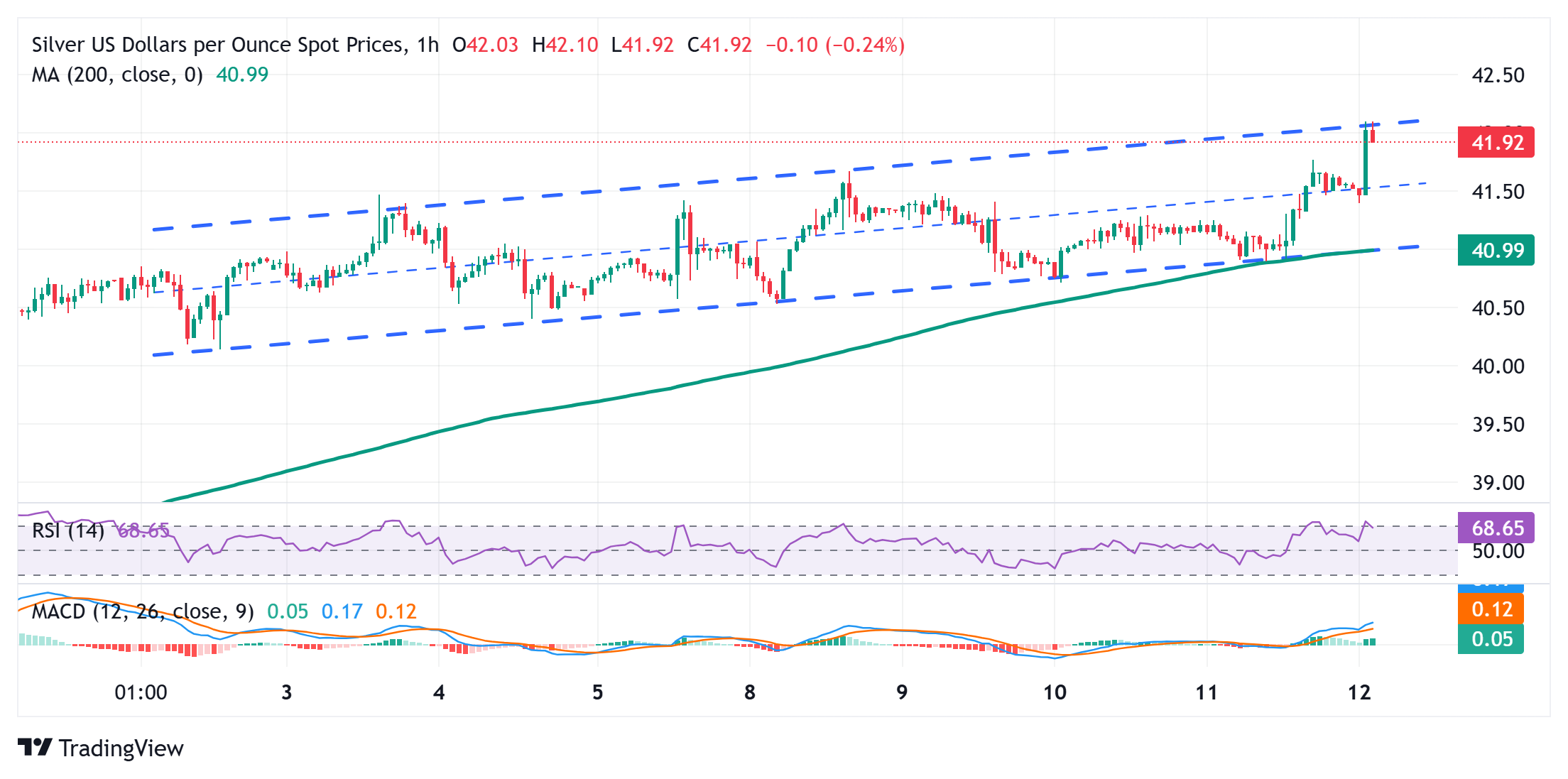Silver Price Forecast: XAG/USD taps $42.00 for the first time since September 2011
- Silver scales higher for the third straight day and touches a fresh multi-year high on Friday.
- A slightly overbought daily RSI warrants caution before positioning for any further upside.
- Any corrective slide could be seen as a buying opportunity and is likely to remain limited.
Silver (XAG/USD) rallies to a fresh high since September 2011 during the Asian session on Friday, with bulls looking to build on the momentum beyond the $42.00 round figure.
From a technical perspective, the white metal is currently placed near the top boundary of the month-to-date (MTD) ascending trend-channel. A sustained strength beyond will mark a fresh breakout and set the stage for an extension of the recent well-established upward trajectory. However, a slightly overbought daily Relative Strength Index (RSI) makes it prudent to wait for some near-term consolidation before positioning for any further gains.
Nevertheless, the XAG/USD remains on track to register gains for the fourth successive week and climb further towards testing the next relevant hurdle near the $42.65 region. The momentum could extend further towards reclaiming the $43.00 round-figure mark en route to the September 2011 swing high, around the $43.40 region.
On the flip side, the Asian session low, around the $41.40 area, now seems to protect the immediate downside. Any subsequent slide might be seen as a buying opportunity, which should help limit the downside for the XAG/USD near the $41.00 mark. The latter represents a confluence – comprising the lower end of the aforementioned channel and the 200-hour Simple Moving Average (SMA) - and should act as a near-term base for the commodity.
A convincing break below, however, might prompt some technical selling and drag the XAG/USD to the $40.55-$40.50 support zone. The white metal could weaken further towards the $40.00 psychological mark before eventually dropping to mid-$39.00s.
Silver 1-hour chart

Silver FAQs
Silver is a precious metal highly traded among investors. It has been historically used as a store of value and a medium of exchange. Although less popular than Gold, traders may turn to Silver to diversify their investment portfolio, for its intrinsic value or as a potential hedge during high-inflation periods. Investors can buy physical Silver, in coins or in bars, or trade it through vehicles such as Exchange Traded Funds, which track its price on international markets.
Silver prices can move due to a wide range of factors. Geopolitical instability or fears of a deep recession can make Silver price escalate due to its safe-haven status, although to a lesser extent than Gold's. As a yieldless asset, Silver tends to rise with lower interest rates. Its moves also depend on how the US Dollar (USD) behaves as the asset is priced in dollars (XAG/USD). A strong Dollar tends to keep the price of Silver at bay, whereas a weaker Dollar is likely to propel prices up. Other factors such as investment demand, mining supply – Silver is much more abundant than Gold – and recycling rates can also affect prices.
Silver is widely used in industry, particularly in sectors such as electronics or solar energy, as it has one of the highest electric conductivity of all metals – more than Copper and Gold. A surge in demand can increase prices, while a decline tends to lower them. Dynamics in the US, Chinese and Indian economies can also contribute to price swings: for the US and particularly China, their big industrial sectors use Silver in various processes; in India, consumers’ demand for the precious metal for jewellery also plays a key role in setting prices.
Silver prices tend to follow Gold's moves. When Gold prices rise, Silver typically follows suit, as their status as safe-haven assets is similar. The Gold/Silver ratio, which shows the number of ounces of Silver needed to equal the value of one ounce of Gold, may help to determine the relative valuation between both metals. Some investors may consider a high ratio as an indicator that Silver is undervalued, or Gold is overvalued. On the contrary, a low ratio might suggest that Gold is undervalued relative to Silver.

